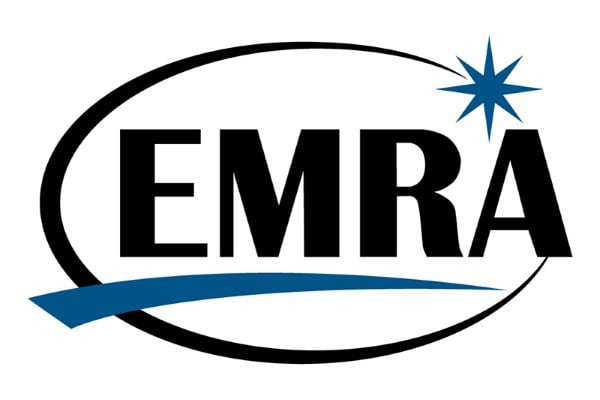Combined EM-IM Residency Training
Have you ever considered applying to combined emergency medicine – internal medicine (EM/IM) residency programs? Ever wondered why anyone would want to spend more time in residency? What are some of the advantages and disadvantages of dual training? What should you know before you apply?
Background
The American Boards of Emergency Medicine and Internal Medicine (ABEM & ABIM respectively) approved the concept of combined EM/IM training in 1989. Currently, there are eleven allopathic EM/IM programs in the country, with a twelfth one starting in July of 2010. Each of these programs has a five-year curriculum, through which residents become eligible for board certification in both EM and IM. Additionally, three EM/IM programs offer an optional EM/IM/Critical Care training. This adds one year to the training (six years total) and board eligibility in Critical Care Medicine on completion.
Although about half of dual training graduates are working primarily in an Emergency Department (ED), more than one-third of recent EM/IM graduates practice both in the EM and IM and more than two thirds practice in an academic setting. About 10% work in internal medicine or a medical subspecialty only and about one out of four graduates has pursued formal fellowship training after residency.
Benefits
Dually trained EM/IM residents are able to confidently face acute illness and injury as well as chronic disease in the ED, the ICU, on the wards and in the clinic. EM/IM residents have the unique opportunity to integrate the knowledge base and skill sets of both specialties into their daily practice. Many “combined” residents feel that their internal medicine exposure helps them to better understand the pathophysiology of medical patients seen in the ED. EM/IM doctors can confidently manage emergency situations in internal medicine settings and are able to take care of the minor surgical problems of their medical patients as they would in an acute setting like the ED.
Critical care medicine is a popular field for EM/IM physicians and is the most common IM fellowship pursued by EM/IM residents. The high acuity care provided in the ED and in the ICU is complementary and a career working in both settings can provide many challenges and rewards. Additionally, EM/IM trained physicians with board certification in both IM and EM are ideal candidates for leadership roles in the growing field of observation medicine where efficiency and continuity of care must be balanced.
Dually trained physicians are uniquely equipped to be systemic problem solvers and leaders in managing administrative issues because they have trained in almost every hospital setting and have worked with nearly every specialty. Dual board certification highlights commitment and EM/IM training enhances leadership abilities – both essential elements of a successful career in academic medicine and the key to successful administration. Collaborating with residents in different programs and learning how to share the knowledge of both specialties are important experiences which help to become a successful educator and mediator.
EM/IM training also leads to a unique understanding of the particularities of the patient population typically seen at Veterans’ Affairs medical centers. These patients often suffer from acute exacerbations of their multiple and chronic medical issues, and the emergency care therefore benefits from the knowledge of both specialties. Working with emergency patients in this setting means less exposure to trauma or pediatric cases. But the integration of internal medicine considerations into the clinical management of these patients is a very demanding task for which dual training offers excellent preparation.
Dually trained physicians are also well suited for work in international medicine. In areas with few resources, the ability to manage both acute and chronic problems is essential. The adaptive and innovative skills enhanced by five-years of combined training are particularly useful in the often difficult or make-shift conditions faced in international and disaster medicine.
Applicants
Applicants to combined EM/IM residency training programs, like categorical EM applicants, are often some of the best in their class. EM/IM applicants often have a diverse and distinct personal background with a wide variety of experiences. Many of them express a great interest in academic careers, in international health or research opportunities. Others are interested in combining work in the ED with work as a hospitalist or in pursuing subspecialty training in fields such as critical care medicine. Whatever their career aspirations or personal background, applicants to EM/IM programs should certainly love both EM and IM and be willing to spend five years training in both. Applicants should be prepared for a demanding five-year training that integrates the large volume of knowledge and skills of both specialties. Additionally, applicants should have a vision for incorporating both components of dual training into their career. Dual training is probably not the best choice for applicants who simply cannot decide between EM and IM training or who only see themselves practicing in one field in the future.
How can I learn more?
A fourth-year rotation at an institution with an EM/IM program is highly recommended. Such a rotation provides the opportunity to interact directly with EM/IM residents. This first-hand experience can lend credibility to your EM/IM residency application and personal statement. Additionally, it enables both the applicant and the program leadership to see if there is a good fit.
Stay involved in EMRA and consider joining ACEP’s Emergency Medicine – Internal Medicine Dual Training Section. Participating in the section’s activities is a great way to network with current residents in and graduates of dual training programs. The section is also a good place to learn about ongoing and upcoming research projects. Furthermore, EMRA members can join one ACEP section for free!
Below are some suggestions for further reading.
Tom Becker, MSIV, cand. med.
International Representative 2009-2010, EMRA Medical Student Council
Section Member, ACEP Emergency Medicine - Internal Medicine Dual Training Section
J. Daniel Hess, MD
Secretary/Newsletter editor, ACEP Emergency Medicine - Internal Medicine Dual Training Section
Chad Kessler, MD, FACEP, FAAEM
Chair, ACEP Emergency Medicine - Internal Medicine Dual Training Section
Section Chief, Emergency Medicine
Jesse Brown VA Hospital
Assistant Professor, Departments of Internal Medicine and Emergency Medicine
Associate Program Director, Combined Internal Medicine/Emergency Medicine Residency
Further reading
- Winters M (2007):“Combined Programs – Emergency Medicine/Internal Medicine”. In: Kristin E. Harkin & Jeremy T. Cushman (Eds.). The Medical Student Survival Guide: 65-68.
- Lewandowski C (²2007):“Combined Programs – Emergency Medicine/Internal Medicine/Critical Care”. In: Kristin E. Harkin & Jeremy T. Cushman (Eds.). The Medical Student Survival Guide: 68-71.
- Kessler CS, Stallings LA, Gonzalez AA, Templemann TA (2009). “Combined Residency Training in Emergency Medicine and Internal Medicine: An Update on Career Outcomes and Job Satisfaction”. Acad Emerg Med 2009(16): 894-899.
- Katz DE, Katz JT (2002). “Careers of Graduates of Combined Emergency Medicine/Internal Medicine Programs”. Acad Emerg Med 2002(12): 1457-1459.
Related Content

Aug 28, 2024
Combined Emergency Medicine-Internal Medicine Residency: Is It Right for You?
Many medical students may not receive substantial exposure to, or information about, combined EM/IM programs during their preclinical and clerkship years. As a result, questions arise regarding what type of student would be the best fit for a combined EM/IM program. The first key consideration is knowledge.





